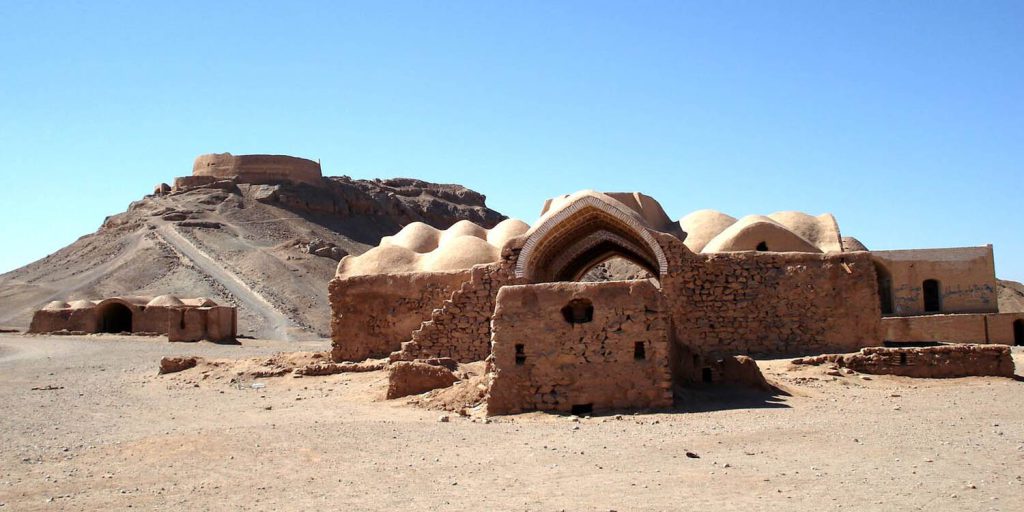
Menu

The Crypt or Tower of Silence is a place where Zoroastrians placed the carcasses of people, who according to their beliefs are pure and outcasts, to be eaten by predators and birds, then the remains of the bones were stored in a well in the middle of the crypt.
According to Zoroastrians, burying a corpse pollutes the sacred element of the soil, and it is noted that in the Zoroastrian religion mourning and impatience for the death of loved ones is strictly prohibited. Dakhmeh were usually formed by humans or naturally and were shaped to facilitate the access of carnivores to the corpse; for this purpose, most of them have no roof and were built outside urban and rural areas and generally on the heights.

With the passage of time and the changes in Zoroaster’s religion, the function of the crypts became more complicated and the task of dismantling the meat and tissues of carcasses from predators to birds (by measures such as raising the crypt or the restriction of access to predators) such as the crypt of Dariush Kabir in Naghsh-e Rostam Shiraz Natural (such as the dome of Kavous in Golestan province) has been modified.
Most of the crypts were built far from the village on top of the hills, they were cylindrical stone towers so that they were not made of earth. Most of them probably didn’t even have a door and went inside with a ladder. They found natural rocks and tied the dead to them, then vultures and carnivores attacked and ate and cleaned up the corpse except for the bones.
In the middle of this tower, there was a hole in which the surviving bones of ordinary people were poured, and the bones of the great and the mighty were kept in “Ostudan” or “Asadaneh”. In India, they have “stupa” instead of “master.”
Main office: Office no. 5, First Floor,Building No. 404, Corner of Beheshti St. and Qaem Maqam St. Tehran Iran.
Tel : +985138519585 EXT. 117
WhatsApp : +968 912 14 982
Email : info@persiantoursgroup.com